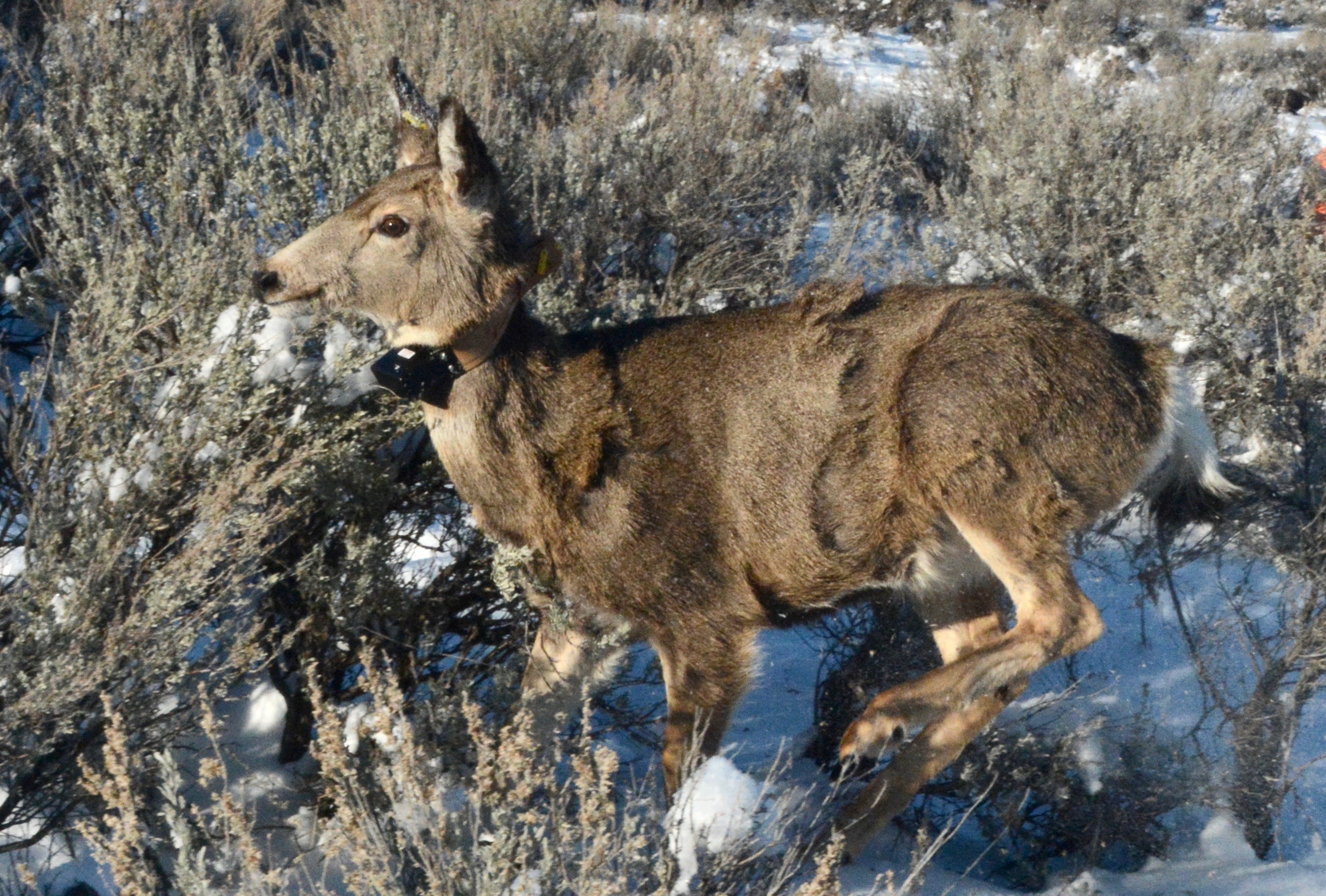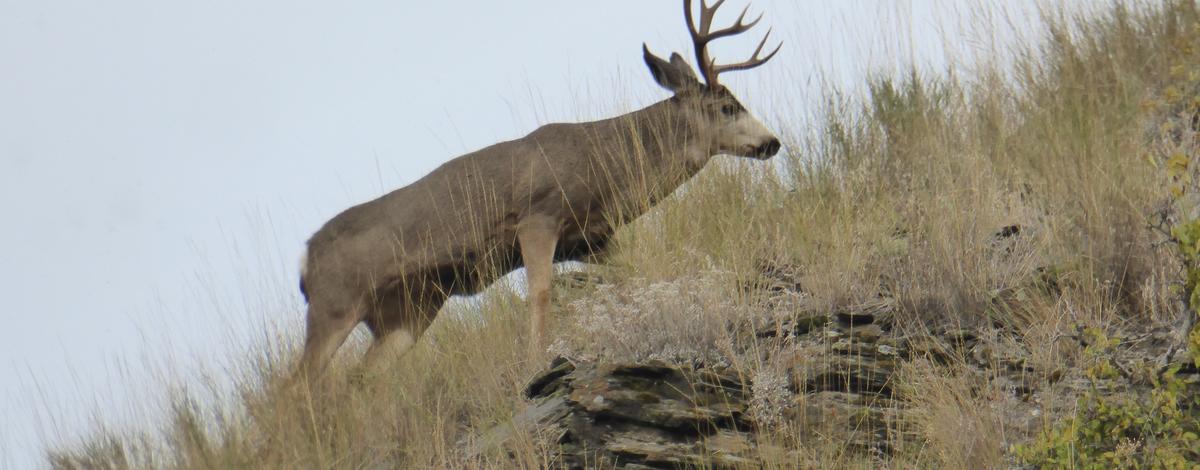Fish and Game researchers want to learn more about mule deer buck survival during hunting seasons, including how the season structure, and hunter access and habitat types affect buck survival. Biologists are using specially designed GPS collars and ear tags to help answer those questions, and collars are being placed on mule deer during winter that will remain on bucks through the upcoming hunting season.

Researchers hope that understanding buck survival will help biologists better manage deer hunting and avoid over-harvesting bucks, as well as meeting hunters’ desires for the age class of bucks and types of hunting seasons.
“Most mule deer hunters would like to see bigger bucks, more bucks, and would also like to go hunting every year,” said biologist Paul Atwood, who is leading the study. “Those things are pretty hard to juggle all at once. Wildlife managers have been creative in how they structured seasons to try and reach those goals, but there are many confounding factors that make it hard to decide what affect you will have if you change a season. We are hoping to address some of those.”
How much the timing and length of a hunting season affects buck survival is one question they would like to answer, but there are more. Such as, what are the effects of controlled hunts vs. general hunts, antler point restrictions, etc. on survival? What about road densities and motorized access into a hunting area, or the amount of conifer cover, or steepness of the terrain?
Incorporating adult buck collaring into traditional doe and fawn collaring
Fish and Game staff and volunteers trap and collar mule deer does and fawns each winter to monitor survival, and they’re adding a sample of mature bucks. They will measure the survival of mule deer bucks in various hunting units, which were selected based on varying topography, conifer cover, road densities, and hunting season structures.
“We want units that compare and contrast really nicely based on those characteristics,” Atwood said. “For example, we want some units with general season opportunity and pretty open train and lots of motorized access. We also want other units that are controlled hunt only, but similar in terms of terrain and accessibility.”
Currently, bucks are collared in units 22, 32, 39, 40 and 41. Other units will be added on a rotating basis in the upcoming years and collars will be deployed in 16 units, which will cover a wide geographic swath of mule deer country.
“Most of our hunters are concerned with how many bucks we have and the quality of those that are out there,” Atwood said. “There are lots of different opinions on how good or bad the mule deer hunting is in a given unit, and almost as many suggestions on how to make it better. This study will allow us to evaluate that scientifically, and provide us with the best data we’ve ever had on the survival rate for adult bucks.”
Overcoming challenges to monitoring adult bucks
For decades, Fish and Game biologists have used radio collars to monitor survival of mule deer fawns (including males) and does, and in recent years, upgraded many to GPS-based collars. But adult bucks pose unique challenges.
Biologists have used collars on adult bucks in previous studies, but the durations have typically been short. In 2019, Fish and Game researchers tested solar powered GPS ear tags, but found they were not suitable to their study.
Part of the challenge of collars is dealing with a buck’s neck, particularly during the fall rut, when the circumference of an adult buck’s neck can increase up to 50 percent for several weeks before shrinking back to normal.
Think about a wrist being like a buck’s neck, and the wrist of a person wearing wristwatch grows 50 percent without adjusting the band. That’s the challenge biologists face when fitting collars on adult bucks and keeping them there without causing harm to the deer.
Taking a longer look at survival
Researchers are also re-engineering collars on male fawns so they will stay on the animals six months longer. Traditionally, those collars were designed to fall off when the young buck reached about a year old so they wouldn’t become too tight as the buck grew. Biologists knew if a fawn survived its first winter, but when collars fell off during spring or summer, the fate of those young bucks after their first hunting season usually remained a mystery.
More time with a collar on will allow researchers to get a better understanding of how many young bucks survive their first hunting season as yearlings, a group that often accounts for a large percentage of the mule deer harvest.
“Fawn winter survival rates vary quite a bit based on the weather and where they are located, but once they get to be a year and a half, it is about 85 to 90 percent survival throughout the year (unless harvested),” Atwood said.
Because collars placed on buck fawns are still expected to eventually fall off, researchers are also attaching special ear tags on the deer. The tags are intended to remain on the animal for the rest of its life, and researchers will rely on hunters to report the ear tags if they harvest a buck with one, and in exchange, hunters will be eligible for a reward.
“Most bucks, after they reach that age, they are most likely going to be harvested. At that point, a hunter — even three or four years later — can report that ear tag. Every male fawn we handle now, we will have a much better chance of figuring out what ultimately happens to them.”

